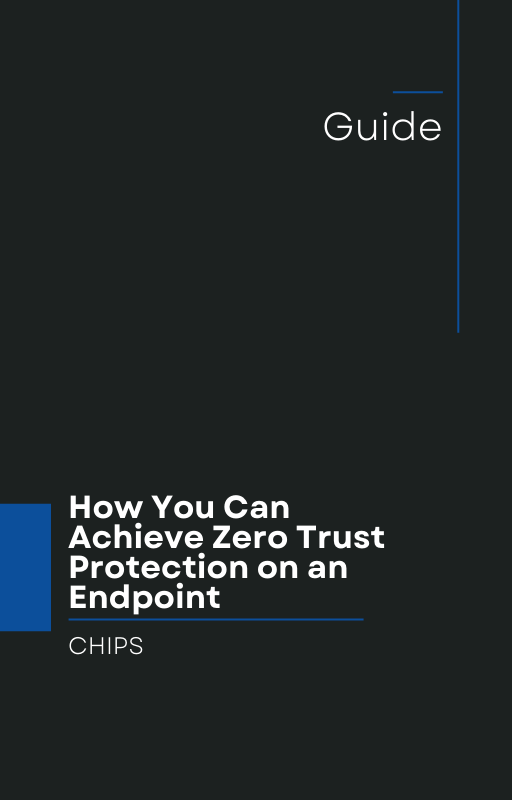Ransomware has just struck closer to home for many small and medium businesses than we might like to think. In late September 2025, the Friendlies Society Dispensary in Toowoomba, Queensland, was hit by a sophisticated ransomware attack. ABC
Hackers reportedly gained access to internal systems, potentially compromising sensitive customer and business data.
Authorities and cybersecurity experts have sounded the alarm: criminal tactics are evolving. It’s no longer just about locking files and demanding payment. Today’s attacks may include data theft, public leakage, and even full deployment through browsers or malicious uploads.
In this post, we’ll examine what the Toowoomba case teaches us, why legacy “Detect & Respond” strategies are no longer sufficient, and how business leaders should transition to “Isolation & Containment” using solutions like AppGuard—a hardened endpoint protection with a proven 10-year track record.
What the Toowoomba Attack Signals
1. Small and regional businesses are no longer off limits
This was not a headline-grabbing global enterprise. It was a regional pharmacy—a business many would view as a lower-profile target. That perception is changing. Cybercriminals are increasingly turning to smaller or “softer” targets as they sharpen their tools.
2. The threat is now multi-pronged
In the past, ransomware mostly encrypted files and demanded a payout. But modern attacks combine multiple vectors: file encryption, data exfiltration, leak-as-extortion, and deployment via malicious web activity (e.g. browser exploits).
3. Human error remains the weak link
Experts point out that reused passwords, email phishing, misguided app installs, or careless file uploads are frequent entry points. Remote access weaknesses and AI-powered campaigns are amplifying the risk.
4. Detection is only half the battle
In the case of the pharmacy, their first response was to “secure systems” and figure out exactly what data was compromised. But once an attacker is already inside, having good detection alone may be too late.
Why “Detect & Respond” Is No Longer Enough
Traditional cybersecurity models often focus on detecting malicious behavior (using antivirus, EDR, threat hunting, and monitoring) and then responding (quarantine, remediation, recovery). But that model assumes you’ll catch the attack before it causes damage.
In modern threat landscapes:
-
Attackers may linger undetected for days or weeks (dwell time).
-
They can exploit zero-day vulnerabilities or commit “living-off-the-land” operations that evade signature-based detection.
-
By the time you detect them, they may have already extracted data, deployed ransomware, or planted persistence mechanisms.
What’s needed is a defense posture that doesn’t rely solely on detection. You need isolation, containment, and proactive enforcement at the endpoint level—so even if an attacker lands, their ability to move, execute, or exfiltrate is severely limited.
Introducing AppGuard: Proven Defense via Isolation & Containment
When the stakes are this high, businesses need endpoint protection that’s not just adaptive, but fundamentally resilient. That’s where AppGuard comes in.
What is AppGuard?
-
A unique endpoint protection solution that isolates and contains untrusted code execution rather than trying to detect it after the fact.
-
Designed from inception as a proactive, “least privilege enforcement” engine—blocking unauthorized actions automatically.
-
Backed by 10 years of proven use in government, critical infrastructure, and high-security sectors before being made available for broader commercial adoption.
How AppGuard changes the game
-
Prevent execution before damage
Rather than waiting for malicious behavior, AppGuard enforces policies by default. Anything that isn’t explicitly whitelisted is isolated or blocked instantly. -
Contain attacks even if they begin
When a malicious script or binary is unleashed, AppGuard constrains it to a sandboxed space. Lateral movement, system-wide changes, or exfiltration are prevented. -
Performance-friendly and low noise
Because AppGuard doesn’t rely solely on signature updates or heavy heuristics, it avoids false positives and performance penalties common in legacy security stacks. -
Defends against advanced tactics
Even attacks delivered via browser exploits or malicious file uploads can be constrained, because AppGuard governs execution at a granular level—regardless of the delivery vector.
From Theory to Practice: Why Business Leaders Should Care
-
Regulatory and reputational risk: For companies handling personal, health, or financial data, breaches trigger legal exposure, fines, and trust loss.
-
Cost of recovery is astronomical: Ransom demands aside, remediation, downtime, investigation, and lost business can easily exceed the ransom itself.
-
Attack frequency is rising: In Australia, cybercrime reports are made roughly every six minutes, and small businesses typically report average losses around AUD 49,600.
-
The human element is unavoidable: No amount of training fully immunizes staff. You need a technical barrier that doesn’t rely on perfect behavior.
Adopting AppGuard allows businesses to move from a “cat-and-mouse” reactive defense to a proactive barrier posture. You don’t just detect threats—you neutralize or contain them at the endpoint before significant damage occurs.
Steps to Transition from Detect & Respond to Isolation & Containment
-
Audit your endpoint coverage today
What EDR or antivirus solutions do you have? Where are the gaps in enforcement or privilege control? -
Deploy AppGuard in monitoring mode first
In most environments, AppGuard can start in a non-blocking mode to establish a baseline and refine policies without disrupting operations. -
Gradually enforce full containment
Begin enforcing automatic isolation for high-risk applications or untrusted code vectors. Expand over time to cover more systems. -
Integrate with incident response plans
When AppGuard isolates a suspicious component, feed those alerts into your SOC or incident plan so containment becomes part of your streamlined workflow. -
Train and communicate to stakeholders
Make sure leadership, IT staff, and end users understand that containment is designed to reduce friction, not increase it.
Conclusion & Call to Action
The ransomware strike on the Toowoomba pharmacy is a stark reminder that even small, regionally-located businesses are prime targets for evolving cyber threats. The old paradigm of “Detect and Respond” simply isn’t enough in a world where attackers move fast, hide in shadows, and combine multiple tactics.
Business leaders must adopt endpoint technologies that emphasize Isolation and Containment—not just detection. AppGuard has a decade of proven track record and now stands ready for broader commercial deployment as an elite defense tool.
If you're a business owner or IT leader, don’t wait for your turn in the headlines. Talk with us at CHIPS about how AppGuard can prevent incidents like this—and help you make the shift from chasing threats to blocking them before they ever breach your critical systems. Contact us today to learn how to move from Detect & Respond to true Isolation & Containment.
Like this article? Please share it with others!

October 16, 2025

Comments